This Tuesday night the Mechanics Institute held a reception for its latest member to make a big splash in world chess: 11-year-old Daniel Naroditsky, the world champion chess player under the age of 12. That has a nice sound to it, doesn’t it? “World champion.” Naroditsky earned this honor by scoring 9.5 out of 11 in the under-12 section at the World Youth Chess Championships in Antalya, Turkey.
According to John Donaldson, the chess director at the Mechanics, Naroditsky is only the third American gold medalist since the youth championships began in their current multi-age format in 1987. However, Donaldson points out that several Mechanics players have done well in the past: Vinay Bhat won two bronzes and Jordy Mont-Reynaud a silver. Also, Jay Whitehead won silver at World Cadet Championship in 1977. (Whitehead came in ahead of Garry Kasparov, who had to settle for bronze, which makes Whitehead the answer to a trivia question.)
Players at the Mechanics have had the unique opportunity to watch “Danya” and his older brother Alan turn into strong chess players over the last four years. Even so, it’s fair to say that his success in Turkey came as a surprise to everyone. “I don’t think that even he expected it,” says national master Michael Aigner, Daniel’s coach and sparring partner. “We were hoping for a medal,” Aigner says, but a gold seemed to be too much to hope for. Daniel was rated only 13th in his age group, which was led by 2377-rated FIDE master Illya Nyzhnyk of Russia. Daniel drew his game with Nyzhnyk and tied for first place with him, but won the gold medal on tiebreaks.
John Donaldson introduces Daniel Naroditsky to his fans.
If I had to describe Daniel in two words, I would choose “poised” and “serious.” Poised: After John introduced him, Daniel analyzed two of his games from Turkey at the demo board. I have taught many college students and watched them give presentations, and I can say that I have seldom seen any of them do so with as much calm and self-assurance as Daniel. In the last round in Turkey, Daniel’s opponent self-destructed while Daniel remained immune to the pressure. At age 11! Serious: I’ve been to several tournaments Daniel has played in, and never have I seen him goofing around or acting silly. The dark circles under his eyes make him seem wise before his time.
Sometimes I wonder if he’s a little bit too serious, because I’ve seldom seen him smile. But here’s what he said about his preparation for Turkey: “I just practiced chess. It was important not to treat the tournament as if it was something special. I just had fun as always.” So I think Daniel’s secret is that he has just as much fun as any other kid. But his idea of fun is playing beautiful chess!
 .
 .
 .
 .
 .
 .
 .
The audience for Daniel Naroditsky’s lecture.
As I mentioned, Daniel talked about two of his games from Antalya. I found his game from the third round to be especially interesting. His opponent, who had White, was a 2031 player from Azerbaijan named Isgandarov. The first turning point came right out of the opening:
Isgandarov has just played 12. Qd2-f2, a move that Naroditsky criticized. (Book is 12. g4-g5.) How should Black take advantage of this?
Daniel played a neat little tactical trick: 12. … Bxg4!? Make sure you look at this carefully, because there is more going on than meets the eye. After 13. fg Nxg4 it looks as if Daniel wins back his piece by 14. Qg3 Nxe3, because 15. Qxe3?? would walk into a deadly pin, 15. … Bg5. However, White has a counter-trick, 15. Rg1!, threatening mate on g7 and defending against … Bg5. Daniel saw this, and was planning to play 15. … Bg5 (anyway!) 15. Qxg5 Qxg5 16. Rxg5 Nxd1 17. Kxd1, with an endgame he felt was slightly better for Black. Very nice!
As it turned out, Isgandarov played 13. Rg1 immediately, giving up the pawn. Perhaps g4 was even a prepared sacrifice. Daniel defended calmly, gradually consolidating his pawn advantage, and I started to think this was just going to be a boring, grind-it-out game. How wrong I was! On the 29th move he got to the following position:
Black’s position seems solid but somewhat lacking in life. It’s especially not clear what his bishops are doing. So he decided on a bold break, which once again had some deep tactical thought behind it: 29. … f6-f5!?
When you put this into a computer it turns out to be a little bit dubious, but I love the concept. Black wants to rip the position open for his dark-squared bishop. After 30. ef e4! (the point!) 31. Bxe4 Qe5 Black threatens both checkmate at b2 (did you see that coming?) and the bishop on e4. However, the computer finds what appears to be a little hole in the combination: 32. Bd4! Qxe4 33. f6! and Black, alas, has to give back the piece he has won, with a position that remains complicated and unclear. This would have been really high-level stuff, and it’s no wonder his opponent didn’t find it. (Nor did any of the masters in the audience last night.)
So instead Isgandarov kept the tension with 30. Bg5 Nf6 31. Rd2 f4!? 32. Bc4!? and the players arrived at a position where once again Daniel made a brave and complicated decision:
He played 32. … bc!, sacrificing his queen for a rook and bishop. After 33. Rxd6 Rxd6 34. Qxe5?! (34. Nc5 was probably better), Daniel played 34. … Ne8! What a nice move, defending everything in the position and opening fire on White’s queen! Now 35. Qxf4 cb 36. ab Rf8 and his opponent cracked with 37. Qe3?? Daniel skewered the queen and rook with 37. … Bd4!, and the rest was mopping up.
What terrific nerves, to go into complications like these instead of just hunkering down behind his extra pawn! Although it’s not completely clear that Daniel’s moves were objectively best, still he played enterprising chess, and this approach to the game will almost always be successful in practical human competition.
* * *
It certainly was a special evening at the Mechanics Institute. The Institute provided hors-d’oeuvres and wine. Mark Leno, a California assembly member from San Francisco, presented Daniel with a Certificate of Recognition from the state government. Daniel’s father thanked all the people who have contributed to Daniel’s success: John Donaldson, Daniel’s chess “godfather”; Michael Aigner, his sparring partner and emotional supporter; Sam Shankland, his teammate on the Mechanics U.S. Chess League team who also competed in Turkey (and perhaps would have won a medal if he hadn’t gotten sick); and Daniel’s brother Alan, who has never let sibling rivalry get in the way of friendship.Â
It may also be worth mentioning that Daniel has a Russian coach, Grandmaster Alexander Kalinin, who gives him lessons over the Internet and was actually at the tournament in Turkey. Probably it’s a good thing that Daniel is getting grandmaster advice as he moves into the next stage of his career.
The biggest credit of all, of course, has to go to Daniel himself. “Daniel is fortunate to have access to a lot of good people,” says Aigner, “but not everybody would be able to synthesize all of that advice. That’s what he is very good at.”
* * *
If you would like to view the whole game with Isgandarov or any of Daniel’s other games in the World Youth Championships, Aigner has posted them all in one convenient place at the CalChess website.
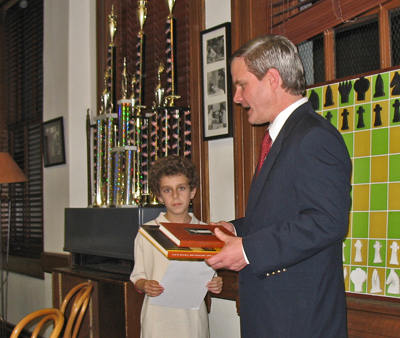
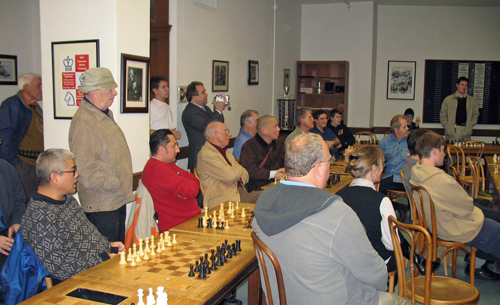
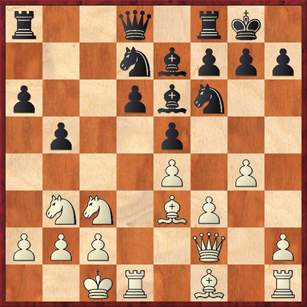
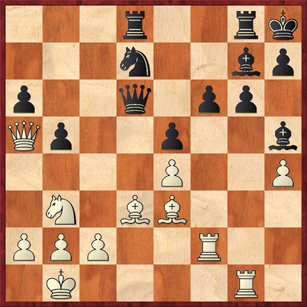
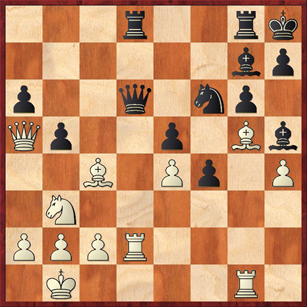



{ 3 comments… read them below or add one }
It’s amazing how quickly kids’ playing strength increases. I actually beat Daniel’s brother, Alan, in the last round of the Pacific Coast Open (U1800) to clinch clear second place. However, I’m sure I probably couldn’t beat him now, even though barely a year has passed since. My rating is higher than it was then but I feel my playing strength is very suspect at the moment, and his rating is a LOT higher than it was but his playing strength seems to be very much intact. 🙂 I don’t think that makes for odds that would be in my favor!
I believe Daniel earned the FM title automatically for his first place. What a great achievement for one so long (well a great achievement for any of us but at the age of 11?!). “Young Fischer” (say it that whispery voice like in the SFBF movie) perhaps!
It makes me wonder what the world championship matches will look like 10 years from now. Are all the young talents a sign that the amount of chess humankind understands is increasing? Were there just as many people that young at that level 50 years ago? Will the young talents get fed up with chess as adults, or is chess able to maintain high priority in people’s lives both when they’re young, adult and old, despite all modern entertainmaint?
It would be nice to be god and know all the answers. 😀
Congratulations from Spain to the new World Champ and his supportive team! Also good luck to the Mechanics. The pictures incñuded in the post are well appreciated.
{ 1 trackback }